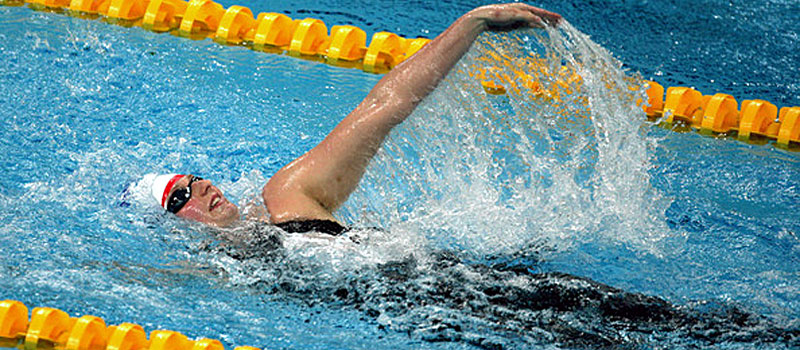Swimming is an individual or team sport that requires the use of one’s arms and legs to move the body through water. The sport takes place in pools or open water (e.g., in a sea or lake). Competitive swimming is one of the most popular Olympic sports,[1] with varied distance events in butterfly, backstroke, breaststroke, freestyle, and individual medley. In addition to these individual events, four swimmers can take part in either a freestyle or medley relay. A medley relay consists of four swimmers who will each swim a different stroke. The order for a medley relay is: backstroke, breaststroke, butterfly, and freestyle.

Backstroke

Breaststroke

Butterfly

Freestyle
Recognizing swimming
England is recognized as the first country to participate in swimming as a recreation and competitive sport. In 1837, competitions were held in man-made pools in London. The National Swimming Society in England organized the competitions which grew quickly in popularity. The very first indoor pool in the history of swimming was constructed in 1862 in England. Soon, more pools were built and another swimming organization was established in 1880. It was known as the Amateur Swimming Association of Great Britain, an organization with more than 300 member clubs.
Entering the Olympics
Swimming joined the Olympics in 1896 as a men’s sport. They competed in the categories of 100-meter and 1500-meter Freestyle. These were held in open water. More Olympic events were soon added during the history of swimming, including breaststroke, backstroke, butterfly, and individual medley. The first few Olympic Games that featured swimming did not include women. It was not until 1912 that women’s swimming made its debut. There are now 16 races held for men and women, totaling 32 altogether, in each Summer Olympic Games. The Special Olympics also has 22 swimming categories for men and women, totaling 44 altogether.
Modifying for speed
Modifications in swimming techniques occurred through this point in the history of swimming as different counties changed the way they accomplished the backstroke and breaststroke. This occurred between 1935 and 1945 and into the 1950s, creating controversy at the Olympics. Around this same time, war shortages demanded a reduction in fabric for making swimming suits. Thus, the first two-piece swimming suits were invented in 1943. Techniques for winning Olympic gold medals changed at this time as swimmers spent more time under water to gain an advantage of speed. It is a technique that is still used today.
References: